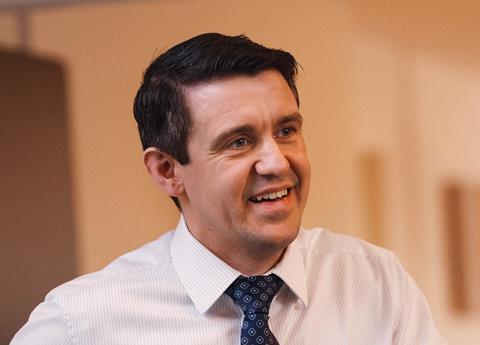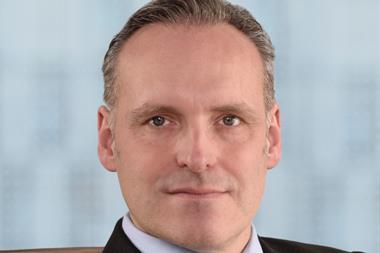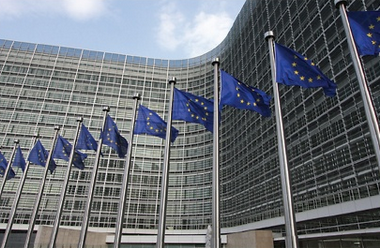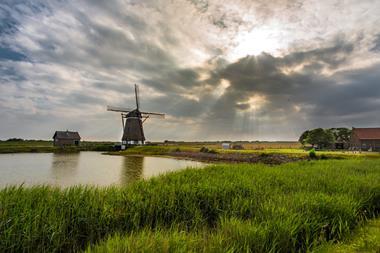The latest component of the European Commission’s sustainable finance action plan went live last month, leaving pension funds in key EU jurisdictions uncertain about precisely what the rules will mean, IPE research finds.
According to Morningstar, SFDR (the Sustainable Finance Disclosures Regulation) forms a “critical part of operationalising the action plan and will distinguish more clearly between different kinds of sustainable investing”.
SFDR applies to a range of “financial market participants”, including asset managers, banks, insurers and pension funds. There was some initial opposition to subjecting pension funds to the same rules as large commercial financial entities when in many cases pension funds do not compete for business, but as one Dutch lawyer told IPE, that battle was lost.
Lawyers at Eversheds in Ireland have noted that SFDR has an “element of public disclosure rather than member-only disclosure” and that this “may not sit well with many Irish trustees, but reflects a more general approach being adopted by European legislators to the pension sector”.
Roma Burke, partner at consultancy LCP in Dublin, said that until recently the industry there was still wondering if the SFDR applies to pension funds, not helped by the fact that many law firms tended to focus on the regulation from the perspective of asset managers.
She said there is now more familiarity with SFDR among trustees, but still some uncertainty about the requirements relating to financial products and how this relates to pension schemes.
“We’re hoping the Pensions Authority will issue some guidance,” Burke told IPE. “For a big change like this you want a collective approach to compliance, and then it’s up to pension schemes to decide if they want to move to best practice.”
Although SFDR took effect on 10 March, detailed rules clarifying how the higher-level requirements are to be implemented are still in draft form, awaiting approval from the European Commission. Officially known as Regulatory Technical Standards (RTS), the implication is they will apply from 1 January 2022.

However, some disclosure requirements came into force in March. These are requirements at so-called entity level – as opposed to the product-level – and at least some pension providers have made initial choices and disclosures associated with them.
‘Adverse impact’ decisions
Under Article 4 of the SFDR, for example, pension funds must publish information on the consideration of ”adverse sustainability impacts” of their investment decisions. They must either set out their due diligence policies with regard to such “principal adverse impacts” or explain that they do not consider them and why, and an opt-out for entities with more than 500 employees expires at the end of June. Considering principal adverse impacts means eventually having to report data on indicators to back this up.
In the Netherlands, about 20% of pension funds have committed to principal adverse impact reporting under the SFDR, according to an analysis of 60 pension funds’ SFDR-related decisions by consultancy AF Advisors shortly after the 10 March deadline. These include the five largest funds ABP, PFZW, PMT, PME and Bouw.
“All these funds have a pension asset manager that also has to abide by the SFDR rules [because they are not eligible for an opt-out]. This makes it easier for them to do so too,” said Ernst de Klerk, director at AF Advisors.
De Klerk found that more than half of the funds (35) in its study have for now decided not to report on the adverse sustainability impacts of their investments. Most of the funds that opted out have done so because they believe there is still too much uncertainty about the rules, according to De Klerk.
“We will implement the remaining demands once the current gaps in the SFDR have been filled.”
René van der Kieft, president of the PostNL pension fund
“We are in compliance with the SFDR demands as of 10 March, but have nevertheless chosen for an opt-out because the RTS will come into force at a later stage,” said René van der Kieft, president of the PostNL pension fund, about the principal adverse impacts regime. “We will implement the remaining demands once the current gaps in the SFDR have been filled.”
Jaap van Dam, responsible for investments at KPN pension fund, said the fund does not want to declare it will be in full compliance with the SFDR “without having full knowledge about the content of the regulation”.
He added: “Therefore we do not currently account for reporting about the most important adverse sustainability impacts as set out in Article 4 of the SFDR, nor for the yet to be published secondary legislation.”
In the Netherlands, the question of an opt-out from Article 4 is complicated by the fact that the so-called IMVB covenant – a responsible investment code that many Dutch pension funds are signed up to – includes due diligence requirements. The regulator has said it supervises compliance with the SFDR and not with the covenant, but that it points out that pension providers “must provide correct information and avoid conflicting reporting”.
In Denmark, pensions mutual Velliv has a webpage dedicated to entity-level SFDR disclosures, including how it seeks “to minimise the most significant negative impacts its investments may have on sustainability factors”.
‘Light green’ classifications
SFDR also requires financial market participants to classify financial products based on the degree of the sustainability-related ambition. There are three categories, one for products “promoting environmental or social characteristics”, one for products that has sustainable investment as its investment objective, and another for all other products. It is now commonplace to refer to them according to the sections of the regulatory text, so Article 8, Article 9 and Article 6, respectively. Precisely what constitutes “promoting” in the context of Article 8 has not yet been clarified by the Commission.
Although additional reporting requirements are imposed on all products, they are enhanced for the Article 8 and Article 9 products. The latter are also referred to as ’light green’ and ’dark green’, respectively.
For pension funds, the ’product’ is the pension scheme itself.
In the Netherlands, most pension funds have gone for the “light green” designation. In its resesarch, AF Advisors identified 42 pension funds that have characterised their pension arrangement as promoting sustainability. Only 10 of the pension funds in AF Advisors’ study opted for an Article 6 classification.
In December last year the Dutch regulator DNB told pension funds that although they could in principle fall into any of the three categories, in practice they should probably be designated as an “other” product or possibly an Article 8 product.
Post NL is one of the pension funds that opted for Article 8 categorisation. “In our investment portfolio we predominantly invest in Article 8 mandates and funds,” said Van der Kieft. He also said the fund wanted to add more Article 9 products.

At PWRI, the Dutch pension fund for disabled workers, trustee Xander den Den Uyl said his fund’s pension arrangement would be Article 8-compliant “as of 2022”.
In Sweden, most pension savings products on offer are being categorised as “light green”, according to Anna Viefhues, sustainability manager at pension provider AMF.
AMF itself has categorised its traditional pension insurance this way as well as the majority of its own funds, Viefhues explains on AMF’s website. She writes that although returns to the provider’s customers always come first, AMF has clarified that its sustainability work must promote, among other outcomes, a shift to lower carbon dioxide emissions by investee companies.
At Velliv in Denmark, head of ESG Thomas Kjærgaard has told IPE that the pensions mutual has had helpful discussions with peers in the Danish industry association about how to approach the SFDR. He said that as there was still some uncertainty about product definitions and data, Velliv had categorised “cautiously and probably a bit conservatively”.
On its website, Velliv said its Aftryk impact-based product “promotes environmental and social characteristics but does not have sustainable investment as a goal” – Article 8, in other words.
A large minority of the Dutch pension funds in AF Advisors’ research had not disclosed any information on their website in connection with the SFDR. Strictly speaking, this means these funds are now in violation, and could face regulatory sanctions, said De Klerk. However, AFM, the Dutch Financial Markets Authority, has indicated it will not strictly enforce pension funds’ SFDR compliance as long as the RTS have not been finalised.
According to Eversheds, in Ireland certain interpretation questions will only be fully resolved once IORP II is implemented, “but in the meantime trustees should take a pragmatic approach to the application of SFDR to their schemes”.
SFDR also seems to be pulling in those that are not in its scope. In Sweden, AP7 has told IPE it is “voluntarily aligning to the reporting standard that has been developed”. In Finland, meanwhile, a spokesperson at Ilmarinen told IPE the SFDR currently doesn’t apply to it because it is an earnings-related pension insurance company, but that the government is preparing legislation to bring these insurers under the regulation.



















No comments yet